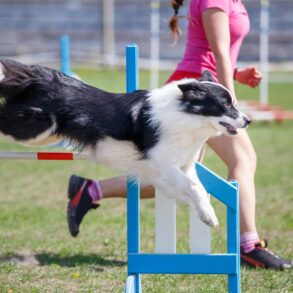Have you ever wondered what your dog is thinking? Who are we kidding, of course you have. We all have. Well, we’ve got some good news: we may soon be able to understand the tone of our dogs. Not what they’re saying, but still something.
Researchers have leveraged advances in the field of human speech processing to classify dog barks across various parameters. Essentially, they assessed whether a dog’s bark conveys playfulness or aggression — along with assessing a dog’s particular breed and a few other metrics.

For decades, scientists have explored the intelligence and communication methods of animals. While much of this research has traditionally focused on primates and birds, recent advancements have turned the spotlight on domestic dogs. Dogs have a close bond with humans which offers a unique opportunity to study interspecies communication.
Interpreting speech
The researchers used pre-established speech recognition engines like Wav2Vec2, managing to improve the accuracy of tasks such as dog recognition, breed identification, gender classification, and context grounding.
Wav2Vec2, a state-of-the-art speech processing model, was originally developed for human speech recognition. It uses a vast corpus of human speech data to learn how to represent audio signals as sequences of discrete tokens. This model’s adaptability has now been demonstrated in processing non-human vocalizations, providing a new tool for animal communication research.
“By using speech processing models initially trained on human speech, our research opens a new window into how we can leverage what we built so far in speech processing to start understanding the nuances of dog barks,” said Rada Mihalcea, the Janice M. Jenkins Collegiate Professor of Computer Science and Engineering, and director of U-M’s AI Laboratory.
“There is so much we don’t yet know about the animals that share this world with us. Advances in AI can be used to revolutionize our understanding of animal communication, and our findings suggest that we may not have to start from scratch.”
Doggy data
The first challenge in this approach is finding sufficient usable data. With wild animals, you can just go into the wild and record. With pet dogs, you can’t really do that.
“Animal vocalizations are logistically much harder to solicit and record,” said Artem Abzaliev, lead author and U-M doctoral student in computer science and engineering. “They must be passively recorded in the wild or, in the case of domestic pets, with the permission of owners.”
The resulting dataset used recordings from 74 dogs in Mexico, captured in various contexts such as interacting with strangers, playing, or reacting to their owner’s presence. This diverse set of stimuli ensured a rich array of vocalizations, essential for robust analysis.
The dataset includes Chihuahuas, French Poodles, and Schnauzers, reflecting some of the common domestic breeds in Mexican households. The recordings were meticulously segmented and annotated to ensure accurate representation of different vocalizations. They captured sounds ranging from playful barks to aggressive growls.
Upon training the model, the researchers were able to reach accuracy figures of around 70% when it came to dog recognition, breed recognition, gender identification, and bark context.
The most complex task involved grounding dog barks in their context—determining the situation prompting a specific vocalization. The study focused on contexts with ample data, such as aggressive barking at strangers and playful barks. The results showed that models pre-trained on human speech could accurately predict the context of the barks, suggesting that dogs, like humans, use vocalizations grounded in specific situations.
A step closer
“This is the first time that techniques optimized for human speech have been built upon to help with the decoding of animal communication,” Mihalcea said. “Our results show that the sounds and patterns derived from human speech can serve as a foundation for analyzing and understanding the acoustic patterns of other sounds, such as animal vocalizations.”
This isn’t exactly a dog translator and we won’t have that anytime soon. But the implications of this research are substantial. By decoding dog barks, we can gain deeper insight into canine emotions and intentions, potentially improving how we interact with our pets. This technology could enhance training methods, aid in animal rescue operations, and ultimately, perhaps even contribute to the development of devices that translate dog barks into human language.
The study was published in the pre-print journal arXiv. Artem Abzaliev et al, Towards Dog Bark Decoding: Leveraging Human Speech Processing for Automated Bark Classification, arXiv (2024). DOI: 10.48550/arxiv.2404.18739
Was this helpful?
Thanks for your feedback!
This post was originally published on this site be sure to check out more of their content.


































